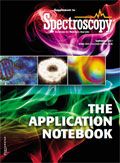IC-ICP-MS Speciation Analysis of As in Organic Brown Rice Syrup (OBRS)
This paper demonstrates an ICP-MS method for the determination of total and As species concentrations in organic brown rice samples (OBRS).
This paper demonstrates an ICP-MS method for the determination of total and As species concentrations in organic brown rice samples (OBRS).
A US report on high As levels in OBRS (1) (an organic food ingredient) has increased interest from consumer groups, politicians and regulatory bodies (2) in the determination of As in foodstuffs.
In this study, OBRS samples were analyzed for total As by ICP-MS and then by IC-ICP-MS to determine the concentration of six As species: two toxic inorganic species (As [III] and As [V], and four organic species that are considered to be harmless).
Instrument configuration
All measurements — total As and As speciation — were carried out using the Thermo Scientific iCAP Qc ICP-MS. All As analyses were performed in He kinetic energy discrimination (KED) mode to minimize polyatomic interferences for the analysis of (monoisotopic) arsenic. Chromatographic separations were carried out using the Thermo Scientific Dionex ICS-5000 ion chromatography system coupled with the iCAP™ Q ICP-MS which was used as a highly sensitive and selective arsenic detector.
Sample Preparation
Three different OBRS samples were prepared for analysis. For total As analysis, a closed microwave digestion method was used (1).Preparation of the samples for speciation analysis was achieved by taking 1.5 g of OBRS, adding 15 mL of 0.28 M HNO3 and refluxing for 90 min (3).
Results
After external calibration, the total As concentration of the samples was determined.

Table I: Results from the total As analysis of three OBRS samples and analytical figures of merit
As can be seen in Table I, total As concentrations of >100 ng/g were found in the three samples analyzed. As these concentrations may be cause for concern, the samples were analyzed by IC-ICP-MS to determine whether As is present in a toxic or rather harmless species. The resulting chromatogram (Figure 1) shows, that the toxic As (III) is the predominant species found in OBRS.

Figure 1: IC-ICP-MS chromatogram of arsenic species found in one of the OBRS samples.
Conclusion
An ICP-MS method for the quantification of total arsenic and six arsenic species (by IC-ICP-MS) in organic brown rice syrup (OBRS) has been demonstrated. Total arsenic concentrations of between 107–136 ng/g were found in the three samples analyzed. IC-ICP-MS speciation analysis showed that the predominant As species found was the toxic inorganic As (III) with over 80% of the total arsenic concentration (equivalent to 86–109 ng/g As [III]).
References
(1) B.P. Jackson et al., Arsenic, Organic Foods, and Brown Rice Syrup, Environmental Health Perspectives (2012) http://dx.doi.org/10.1289/ehp.1104619.
(2) FDA Statement on Arsenic in Brown Rice Syrup, February 2012: http://www.fda.gov/Food/FoodSafety/FoodContaminantsAdulteration/Metals/ucm292531.htm.
(3) Huang et al.,Quantitative chemical extraction for arsenic speciation in rice grains, J. Anal. At. Spectrom. 25, 800–802 (2010). DOI: 10.1039/C002306.
Thermo Fisher Scientific
Hanna-Kunath-Str. 11, Bremen, D-28199, Germany
tel. (800) 532-4752, fax: (608) 273-5046
Website: www.thermoscientific.com

LIBS Illuminates the Hidden Health Risks of Indoor Welding and Soldering
April 23rd 2025A new dual-spectroscopy approach reveals real-time pollution threats in indoor workspaces. Chinese researchers have pioneered the use of laser-induced breakdown spectroscopy (LIBS) and aerosol mass spectrometry to uncover and monitor harmful heavy metal and dust emissions from soldering and welding in real-time. These complementary tools offer a fast, accurate means to evaluate air quality threats in industrial and indoor environments—where people spend most of their time.